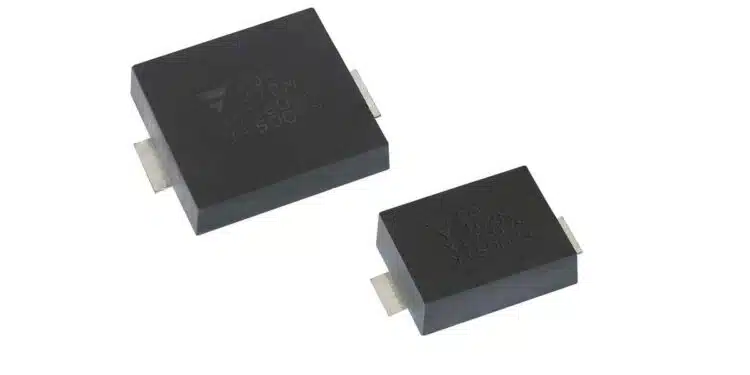Vishay Intertechnology, Inc. introduced a new series of Automotive Grade AC line rated ceramic disc safety capacitors that are the industry’s first with a Y1 rating to be offered in a surface-mount casing.
Combining their Y1 rating of 500 VAC and 1500 VDC with high capacitance to 4.7 nF, the Vishay BCcomponents SMDY1 Automotive Series devices are designed to provide EMI / RFI suppression and filtering in harsh, high humidity environments.
AEC-Q200 qualified with PPAP available, the capacitors released today will be used in on-board chargers (OBC), traction inverters, battery management systems (BMS), e-compressors, and AC/DC converters in electric (EV), hybrid electric (HEV), and plug-in hybrid electric (PHEV) vehicles. For these applications, the devices offer high humidity resistance with a Class IIB humidity grade (in accordance with IEC60384-14 annex I) and can withstand the 85 / 85 / 1000 h test.
Allowing for surface-mount assembly with a reflow soldering process, SMDY1 Automotive Series ceramic capacitors reduce production costs. Unlike leaded components, the devices offer a low, flat profile on the PCB to enable flat casings or backside PCB mounting without the clearance space required by through-hole capacitors.
RoHS-compliant and halogen-free, the components consist of a copper-plated ceramic disc and feature encapsulation made of flame-resistant epoxy resin in accordance with UL 94 V-0. The devices are available in two case sizes: the C case with a creepage distance of 10 mm and the D case with a creepage distance of 14.5 mm.
Device Specification Table:
| Series | SMDY1 Automotive Series | |
| Ceramic class | 2 | |
| Ceramic dielectric | Y5U | |
| Voltage (VAC) | Y1: 500(1500 VDC) | X1: 760 |
| Min. capacitance (pF) | 470 | |
| Max. capacitance (pF) | 4700 | |
| Capacitance tolerance (%) | ± 20 | |
| Mounting | Surface-mount | |
Samples and production quantities of the SMDY1 Automotive Series are available now, with lead times of 12 weeks.































